The Lamar Jackson era has reignited optimism around the Ravens regarding their ability to contend for a third Super Bowl title. Coming off of their third straight postseason appearance — and first playoff victory — during Jackson’s tenure as the starting quarterback, expectations were high for the 2021 season in Baltimore. A myriad of injuries (including to the 25-year-old himself) sparked a six-game losing streak to end the campaign, knocking the team out of the postseason.
This coming season is therefore seen as something of a mulligan in Charm City. A return to health for a number of key players, along with a retooled defense, could once again land the team among the AFC’s elite. The conference has added a number of stars on both sides of the ball, though, including moves which figure to see both Ohio teams remain divisional contenders for the foreseeable future. With Jackson’s Baltimore tenure remaining a point of contention, have the Ravens done enough this spring to make a championship run?
Trades:
- Sent WR Marquise Brown and 2022 third-round pick to Cardinals for 2022 first-rounder
 General manager Eric DeCosta has shown a propensity to pull off significant trades during his relatively brief time at the helm of the Ravens. Moving Brown represents another sizable deal he executed, a process which involved keeping the likelihood of a swap under wraps for months. Only after the Day 1 draft deal was it revealed that Brown had requested to be traded at the end of the regular season. By honoring that wish, the team ended the up-and-down tenure of only its second-ever homegrown 1,000-yard receiver.
General manager Eric DeCosta has shown a propensity to pull off significant trades during his relatively brief time at the helm of the Ravens. Moving Brown represents another sizable deal he executed, a process which involved keeping the likelihood of a swap under wraps for months. Only after the Day 1 draft deal was it revealed that Brown had requested to be traded at the end of the regular season. By honoring that wish, the team ended the up-and-down tenure of only its second-ever homegrown 1,000-yard receiver.
Putting aside the close personal relationship between Brown and Jackson, the deal leaves the team with a significant void in the passing game. Brown eclipsed the 1,000-yard mark in 2021 and ranked 10th in the NFL in targets. While 2021 first-rounder Rashod Bateman is poised to take over as the Ravens’ top wideout, the depth chart seriously lacks experience and pedigree. With neither the extra first-rounder they acquired via the pair of swaps made during that night, nor any other selection, did the team add to its WR corps. Baltimore has been labeled a candidate to bring in a veteran, though a move of anywhere near as much significance as the Brown deal is highly unlikely.
Notable signings:
- Marcus Williams, S. Five years, $70MM. $37MM guaranteed.
- Michael Pierce, NT. Three years, $16.5MM. $6.75MM guaranteed.
- Calais Campbell, DE. Two years, $16.5MM. $6MM guaranteed.
- Morgan Moses, OT. Three years, $15MM. $5.5MM guaranteed.
- Patrick Ricard, FB. Three years, $11.25MM. $4.5MM guaranteed.
- Justin Houston, OLB. One year, $3.5MM. $3.5MM guaranteed.
- Kyle Fuller, CB. One year, $2.5MM. $2.5MM guaranteed.
- Josh Bynes, LB. One year, $1.27MM. $600K guaranteed.
- Mike Davis, RB. One year, $1.12MM. $155K guaranteed.
- Brent Urban, DE. One year, $1.12MM.
- Steven Means, OLB. One year, $1.12MM.
- Vince Biegel, LB. One year, $1.04MM.
- Kevon Seymour, CB. One year, $965K.
The Ravens haven’t been afraid to spend significant free agency dollars on the safety position in recent years, handing out deals to the likes of Eric Weddle and Earl Thomas. Williams is the latest in that line of acquisitions, though his age (25) should allow for a longer tenure with the team compared to the team’s previous big-ticket safety signings. The former second-rounder established his playmaking ability in New Orleans, where he racked up 15 interceptions across five seasons. The 2021 campaign, in which he played on the franchise tag, also saw him make strides in pass coverage.
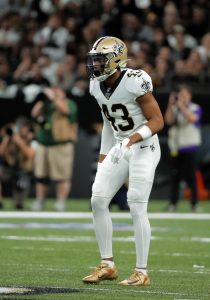 Williams will provide the Ravens with a ball-hawking ability which has been lacking recently. The team ranked 26th in the league with just nine interceptions last year, a statistic which was exacerbated by the defense’s overall struggles against the pass (surrendering a league-worst 279 yards per game through the air). At an annual average of $14MM per season, Williams’ contract ranks eighth among safeties, as the position continues to enjoy an upward trend. The degree to which he lives up to the lucrative pact will go a long way in determining the defense’s success for the short- and long-term future.
Williams will provide the Ravens with a ball-hawking ability which has been lacking recently. The team ranked 26th in the league with just nine interceptions last year, a statistic which was exacerbated by the defense’s overall struggles against the pass (surrendering a league-worst 279 yards per game through the air). At an annual average of $14MM per season, Williams’ contract ranks eighth among safeties, as the position continues to enjoy an upward trend. The degree to which he lives up to the lucrative pact will go a long way in determining the defense’s success for the short- and long-term future.
The defensive line was identified as an area in need of a youth movement at the end of the 2021 season. While the starting unit will look different this fall, Campbell and Pierce will be familiar faces. The former had contemplated retirement before ultimately committing to play at least one more season, making a reunion with Baltimore a logical choice. The 2010s All-Decade Team member will be 36 this campaign, but he also represents the lone returnee from the 2021 starters along the D-line. Campbell’s level of play against the run in particular has shown little sign of decline in recent years, and his leadership within a relatively young front seven will carry value.
In the middle of the line, Pierce will step back into the starting role he held at the end of his first Ravens tenure in 2019. The deal he signed to return is significantly smaller in value than the one he inked with the Vikings that offseason, but it gives him notable security considering the limited time he has spent on the field in the last two years. A 2020 opt-out, the 29-year-old was limited to eight contests last season, ultimately leading to his Vikings release. Rediscovering the form which earned him that Minnesota deal would add a boost to the defensive front. Urban represents another reunion; the veteran Canadian has started for the Ravens in the past but figures to play a rotational role in 2022.
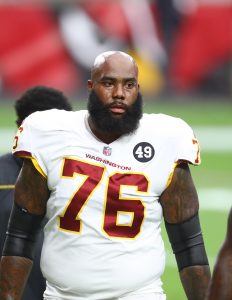 On the opposite side of the ball, fortifying the offensive line became plainly necessary as the 2021 campaign progressed. While a return to health from left tackle Ronnie Stanley would solve much of the issue in pass protection in particular, finding a veteran bookend was among the team’s top priorities, and something made more financially viable by a reunion with Za’Darius Smith falling through. Moses, 31, figures to provide a steady presence at that spot, having posted a PFF grade of 71 with the Jets last year, a figure roughly in line with his career average.
On the opposite side of the ball, fortifying the offensive line became plainly necessary as the 2021 campaign progressed. While a return to health from left tackle Ronnie Stanley would solve much of the issue in pass protection in particular, finding a veteran bookend was among the team’s top priorities, and something made more financially viable by a reunion with Za’Darius Smith falling through. Moses, 31, figures to provide a steady presence at that spot, having posted a PFF grade of 71 with the Jets last year, a figure roughly in line with his career average.
A recipient of the rarely used UFA tender, Houston remaining in Baltimore was always the likeliest outcome, despite the delay in his decision to re-sign. The Ravens had been connected to a number of veteran pass rushers, and the former NFL sack leader will again be leaned on in at least a rotational capacity within an otherwise young position group facing a number of health questions. Likewise, the one-year investment in Fuller could prove worthwhile. The Baltimore native is coming off of a disappointing season with the Broncos, but he could see significant playing time as part of the Ravens’ retooled CB room.
Notable losses:
- Anthony Averett, CB
- Miles Boykin, WR
- Bradley Bozeman, C
- DeShon Elliott, S
- Justin Ellis, NT
- L.J. Fort, LB
- Devonta Freeman, RB
- Sam Koch, P (retired)
- Anthony Levine, S (retired)
- Pernell McPhee, OLB
- Latavius Murray, RB
- Jimmy Smith, CB
- Alejandro Villanueva, OT (retired)
- Sammy Watkins, WR
- Brandon Williams, NT
- Derek Wolfe, DT (released via injury settlement; later retired)
- Tavon Young, CB
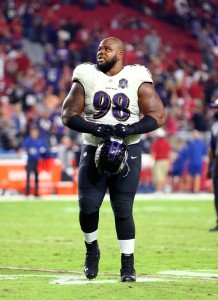 Williams and Wolfe headline the front-seven departures. The former had spent his entire nine-year career in Baltimore, while the latter was in line to start alongside him this season before being sidelined with hip issues. Their departures will leave the team short two starting-caliber leaders, and place even higher expectations upon 2019 third-rounder Justin Madubuike to not only take on a permanent first-team role, but develop into an impact player.
Williams and Wolfe headline the front-seven departures. The former had spent his entire nine-year career in Baltimore, while the latter was in line to start alongside him this season before being sidelined with hip issues. Their departures will leave the team short two starting-caliber leaders, and place even higher expectations upon 2019 third-rounder Justin Madubuike to not only take on a permanent first-team role, but develop into an impact player.
Given the struggles on the offensive line, changes were inevitable. Villanueva’s retirement came after an underwhelming final chapter of his Pro Bowl career, but it was expected considering his inconsistent play. Bozeman departing was likewise unsurprising, though the fact that he was only able to land a one-year deal in Carolina was noteworthy. The Alabama product established himself as a dependable starter in the middle of the line, albeit at a position the team had options for regarding a replacement both before and after the draft.
The area of the roster which has seen the most changeover is the secondary. Elliott handled full-time starting duties for the second straight season, proving his worth when able to remain on the field (the infrequency of which throughout his career no doubt hurt his free agent value). Averett shouldered by far the largest workload of his career (with a snap share of 90%) stepping in for a CB room which lost Marcus Peters and, later, Marlon Humphrey as well. The production he managed in 2021 made the position’s remaining depth the source of many questions leading up to the draft.
 Those two departures, like Young (who, before many of his lengthy injuries, was at one point the league’s highest-paid slot corner) could turn their respective one-year deals into more lucrative pacts with similar campaigns to 2021. Meanwhile, Smith’s career-long Baltimore tenure could be over after a third straight year of declining snap percentage. He, like McPhee, may have played his final NFL snap.
Those two departures, like Young (who, before many of his lengthy injuries, was at one point the league’s highest-paid slot corner) could turn their respective one-year deals into more lucrative pacts with similar campaigns to 2021. Meanwhile, Smith’s career-long Baltimore tenure could be over after a third straight year of declining snap percentage. He, like McPhee, may have played his final NFL snap.
Special teams will also have a distinctly different look in 2022. Koch will transition to the sidelines more than one season removed from becoming the all-time franchise leader in games played (256). His retirement ends the hugely productive tandem formed between he and Justin Tucker dating back to 2012.
In a similar vein, Levine’s absence will be noticed on the field, given his 10 years of (primarily) third phase contributions. Successors for both appear to be in place, and they are each slated for coaching roles with the team moving forward.
Draft picks:
- 1-14: Kyle Hamilton, S (Notre Dame)
- 1-25: Tyler Linderbaum, C (Iowa)
- 2-45: David Ojabo, OLB (Michigan)
- 3-76: Travis Jones, NT (Connecticut)
- 4-110: Daniel Faalele, OT (Minnesota)
- 4-119: Jalyn Armour-Davis, CB (Alabama)
- 4-128: Charlie Kolar, TE (Iowa State)
- 4-130: Jordan Stout, P (Penn State)
- 4-139: Isaiah Likely, TE (Coastal Carolina)
- 4-141: Damarion Williams, CB (Houston)
- 6-196: Tyler Badie, RB (Missouri)
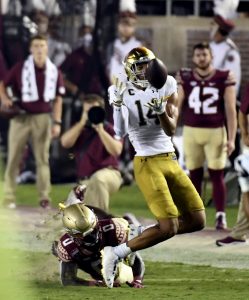 Just as the safety position was targeted in free agency, it has been in the spotlight when analyzing the Ravens’ draft haul. Seen by many throughout the buildup process as one of the top prospects in the class, Hamilton was tapped as a candidate to fall outside of the top 10 in the weeks leading up to the first round. His position, along with a season-ending knee injury and questions about his testing numbers all contributed to such a slide taking place. Having just witnessed the Eagles move ahead of them to secure Jordan Davis, the Ravens, then, allowed the highly productive Fighting Irishman to fall into their laps.
Just as the safety position was targeted in free agency, it has been in the spotlight when analyzing the Ravens’ draft haul. Seen by many throughout the buildup process as one of the top prospects in the class, Hamilton was tapped as a candidate to fall outside of the top 10 in the weeks leading up to the first round. His position, along with a season-ending knee injury and questions about his testing numbers all contributed to such a slide taking place. Having just witnessed the Eagles move ahead of them to secure Jordan Davis, the Ravens, then, allowed the highly productive Fighting Irishman to fall into their laps.
During his three seasons in college, Hamilton showcased rare size at the position (6-foot-4, 220 pounds), which he coupled with impressive versatility and athleticism. The 2021 consensus All-American’s skillset and leadership make him a candidate to start right away. If he does, attention will turn to veteran Chuck Clark. The defense’s top communicator has been included in trade speculation since Hamilton’s selection, despite the presence of his team-friendly contract. The way snaps are divvied up between the two will be a talking point in the buildup to the season.
The Ravens traded places with the Bills later on in the first round, dropping two places while still securing Linderbaum. Widely regarded as the top center in this year’s class, the former Hawkeye has drawn comparisons to Jason Kelce with his level (and style) of play. The anchor of Iowa’s offensive line for the past two seasons, Linderbaum won the Rimington Trophy in 2021 en route to being named, like Hamilton, a consensus All-American.
Linderbaum figures to start right away as a replacement for Bozeman. His relatively small frame and lack of length will lead to questions about his fit within the Ravens’ scheme, but he has the opportunity to stabilize the position for the long-term. If can live up to his potential, Linderbaum will help improve the team’s pass protection along the interior — something which has plagued the Ravens even dating back to the end of Marshal Yanda’s career.
Ojabo represents the second significant draft investment at the outside linebacker position in as many years. 2021 first-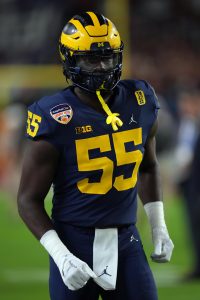 rounder Odafe Oweh showed potential as a rookie against the run in particular, but adding a potential sack artist was long seen as a top priority. Ojabo stood out in that department last season and will have an opportunity at least on passing downs to make a sizable impact early in his career. When he makes his debut is a central question, of course. A torn Achilles suffered at his Pro Day (singularly leading, in the minds of many, to his slide out of the first round) leaves his availability for the first half of the season severely in doubt. Still, the Nigerian-born 22-year-old could emerge, along with Oweh, as a foundational piece along the team’s front seven.
rounder Odafe Oweh showed potential as a rookie against the run in particular, but adding a potential sack artist was long seen as a top priority. Ojabo stood out in that department last season and will have an opportunity at least on passing downs to make a sizable impact early in his career. When he makes his debut is a central question, of course. A torn Achilles suffered at his Pro Day (singularly leading, in the minds of many, to his slide out of the first round) leaves his availability for the first half of the season severely in doubt. Still, the Nigerian-born 22-year-old could emerge, along with Oweh, as a foundational piece along the team’s front seven.
Another new face on the interior of the defensive line is Jones, who could help achieve the goal of adding more pass-rush ability to Baltimore’s D-line, something which contributed greatly to the team’s overall struggles on defense last season. Jones won’t see the field as often as those drafted ahead of him right away, but he profiles as a potential long-term successor to Williams with a more well-rounded skillset. He was followed on Day 3 by a piece of draft history, as the Ravens became the first team to ever make six selections in one round. Their sizable haul within that stretch includes Stout, the first punter to hear his name called. The ex-Nittany Lion faces the tall order of replacing Koch in both the short- and long-term.
Extensions and restructures:
- Restructured TE Nick Boyle’s contract, reducing his 2022 salary to $1.12MM and creating $2.57MM in cap space
- Reworked CB Marlon Humphrey’s deal, dropping his 2022 salary to $1.035MM and creating $7.17MM in cap space
Other:
- Continuing Jackson extension talks
- Signed head coach John Harbaugh to three-year extension
- Hired Mike Macdonald as defensive coordinator, replacing Don Martindale
- Hired Sashi Brown as president, replacing Dick Cass
- Signed 17 UDFAs
- OLB Jaylon Ferguson died at age 26
The matter of signing Jackson to a multiyear extension has long been perceived as an inevitability, but little (if any) significant progress has been made this offseason. In March, DeCosta outlined the notable disparity between the front office’s desire to hammer out a long-term deal and the 25-year-old’s. Jackson was absent from OTAs for the first time in his career, but another round of talks took place during minicamp. Speculation has swirled about the likelihood of a contract being finalized in time for the start of the season, and, consequently, the long-term future of this relationship.
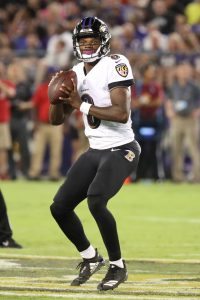 Set to earn $23MM this season on the fifth-year option, Jackson (who has represented himself throughout the negotiating process) is coming off the worst season of his career, a campaign which ended with five missed games due to injury. Many around the league nevertheless expect an extension similar to the ones signed by Deshaun Watson and Kyler Murray — averaging 46MM and $46.1MM per season, respectively — earlier this offseason to be the end result of this episode. Playing out one or two seasons on the franchise tag as Kirk Cousins did in Washington remains a possible alternative — a long-term route owner Steve Bisciotti referenced earlier this offseason.
Set to earn $23MM this season on the fifth-year option, Jackson (who has represented himself throughout the negotiating process) is coming off the worst season of his career, a campaign which ended with five missed games due to injury. Many around the league nevertheless expect an extension similar to the ones signed by Deshaun Watson and Kyler Murray — averaging 46MM and $46.1MM per season, respectively — earlier this offseason to be the end result of this episode. Playing out one or two seasons on the franchise tag as Kirk Cousins did in Washington remains a possible alternative — a long-term route owner Steve Bisciotti referenced earlier this offseason.
The Louisville alum’s arrival at, and participation in, training camp has led to renewed optimism that fruitful talks will continue. Both parties have kept things close to the vest, meaning that few tangible updates could be provided until any new deal becomes imminent. In any case, Jackson will once again be expected to drive the team’s offense both in the air and on the ground amid the absence of Brown and a number of question marks surrounding the run game.
Just like Jackson, 2022 would have represented a contract year for Harbaugh if not for the extension. The signing came after only the second losing season the team has had during his tenure — both of which have been rather directly tied to injuries. Since Jackson’s ascension to the starting role, Baltimore has again become the site of playoff contests on a consistent basis, a departure from the relative dry spell following the Super Bowl winning campaign of one decade ago. Now the third-longest-tenured coach in the league, the 59-year-old has a realistic chance of moving into the top 25 in terms of all-time wins this season. Doing so will require a return to form on the field in 2022, but also a significant new face on the sidelines.
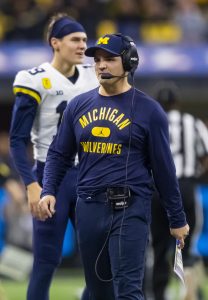 Macdonald represents an outside arrival since he spent 2021 with Michigan, but he spent the previous seven years on the Ravens’ sidelines. Long seen as the heir apparent to Martindale, he helped lead the Wolverines to the Big Ten title and a CFP semifinal berth. A large part of that success was the play of the Wolverines’ defense, which Macdonald led after wearing a number of different positional hats in Baltimore. At age 34, he is not only the youngest DC in franchise history, but one who faces the tall task of returning the unit to the success the franchise has largely been known for.
Macdonald represents an outside arrival since he spent 2021 with Michigan, but he spent the previous seven years on the Ravens’ sidelines. Long seen as the heir apparent to Martindale, he helped lead the Wolverines to the Big Ten title and a CFP semifinal berth. A large part of that success was the play of the Wolverines’ defense, which Macdonald led after wearing a number of different positional hats in Baltimore. At age 34, he is not only the youngest DC in franchise history, but one who faces the tall task of returning the unit to the success the franchise has largely been known for.
Martindale’s 2021 performance differed enormously from those of his previous three seasons in charge of the defense. Elite rankings both in terms of yardage and points allowed were replaced with uncharacteristic positions (25th in yards, 19th in scoring) in 2021. A lack of sacks or takeaways exacerbated the unit’s injuries, in particular in the passing game. With a successful stint in New York, though, he could remain on track for a head coaching role in the future.
Late June brought a tragedy for the Ravens, when Ferguson died suddenly. A lethal dose of cocaine and fentanyl was determined to be the cause of Ferguson’s passing. The 2022 season was expected to be a career year for the former third-round pick, who had played a rotational role in the first three seasons of his career. Instead, it will be a stark reminder of his absence.
Top 10 cap charges for 2022:
- Lamar Jackson, QB: $23.02MM
- Ronnie Stanley, LT: $18.55MM
- Marlon Humphrey, CB: $17.45MM
- Marcus Peters, CB: $15.5MM
- Mark Andrews, TE: $9.66MM
- Kevin Zeitler, RG: $8.98MM
- Justin Tucker, K: $5.91MM
- Tyus Bowser, OLB: $5MM
- Chuck Clark, S: $4.63MM
- Gus Edwards, RB: $4.5MM
Jackson has been arguably the league’s biggest bargain on his rookie contract, but his 2022 compensation still pales in comparison to what he will earn on a new deal (in Baltimore or elsewhere) after this season. Incremental increases in cap charges for almost every name on the list — with the notable exception of Peters, a free agent at the end of the year — put Baltimore in line for more flexibility than most other teams in the league next offseason, pending what happens with Jackson, of course.
In an ideal world, the Ravens would translate a return to full health across the board into another postseason run. More realistically, an adjustment period as injured players return to the field and a new defense takes shape should be expected. Improved offensive line play should allow Jackson and Co. to return to the efficiency of years past, though questions related to the passing game remain to a greater extent than many would have expected at this point. In what figures to be an immensely competitive conference, the Ravens should nevertheless be counted amongst the strongest contenders.

No mention of Justin Tucker but he’s worth at least two wins a season that you wouldn’t be getting if you had a mediocre kicker.